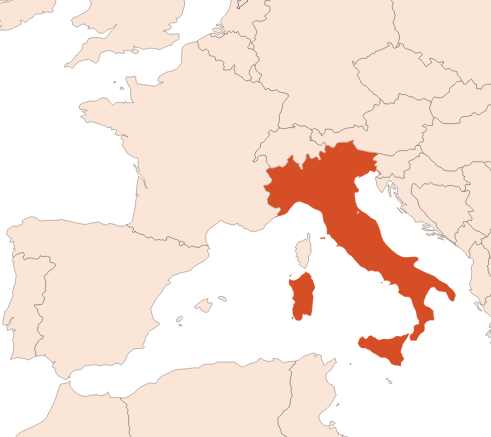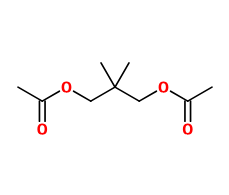
| Company | Ingredient Name | ID | Comments | Naturality | Certifications | MOQ | Latin name | Treated part | Geographical origin |
|---|---|---|---|---|---|---|---|---|---|
|
|
Huile essentielle de Cédrat - 30 gr | - |
Visit website
|
- | - | - | - | - |
General Presentation
-
CAS N° :
68991-25-3 -
EINECS number :
639-167-5 -
FEMA number :
Donnée indisponible.
-
Volatility :
Head -
Price Range :
€€
Physico chemical properties
-
Appearance :
Pale yellow liquid -
Density :
0,845 - 0,860 @20°C -
Refractive Index @20°C :
1,470 - 1,480 @20°C -
Optical rotation :
+50° // +70° -
Vapor pressure :
Data not available. -
Flash Point :
Data not available. -
Acid Value :
Botanical informations
Botanical name :
Citrus medica L.
Synonyms : Aurantium medicum (L.) M.Gómez // Citrus fragrans Salisb.
Botanical profile :
Citron is the fruit of the citron tree, which belongs to the Rutaceae family and the genus Citrus L.
The Rutaceae family encompasses all citrus fruits, as well as plants like buchu and amyris.
Chemotypes :
The Citrus L. genus, which includes the vast majority of citrus fruits, contains a large number of varieties used in perfumery:
- Citrus × aurantium L.: Bitter orange tree, cultivated in Spain and Florida. Orange oil expressed (Bitter) / Orange oil (Bitter) / Petitgrain bigarade oil / Petitgrain bigarade absolute / Petitgrain oil (Paraguay) / Orange flower absolute (Bitter) / Orange flower concrete (Bitter) / Orange flower SFE (Bitter)
- Citrus × aurantiifolia (Christm.) Swingle: The lime tree, mostly cultivated in Mexico. Lime oil expressed / Lime oil distilled
- Citrus × bergamia Risso: The bergamot tree, a hybrid of lemon and bitter orange, cultivated for its fruit and petitgrain oils. Bergamot oil expressed / Petitgrain bergamot absolute.
- Citrus hystrix DC.: Kaffir lime, grown in Thailand and India. Kaffir lime oil.
- Citrus × junos Siebold ex Yu.Tanaka: Yuzu, produced in Japan and Korea. Yuzu oil / Citrus junos oil / Citrus junos extract
- Citrus × limon (L.) Burm.fil.: The lemon tree, cultivated in Italy for its fruit and leafy branches. Lemon oil / Lemon oil (distilled, rectified) / Petitgrain lemon oil
- Citrus × paradisi Macfad.: The grapefruit tree, of Malay origin, cultivated in Brazil and Israel for its fruit’s essential oil. Grapefruit oil / Grapefruit flower oil / Grapefruit oil expressed
- Citrus sinensis L.: The sweet orange tree, widely cultivated in Brazil and California, is the most used citrus in perfumery. Orange flower absolute (Sweet) / Orange flower concrete (Sweet) / Orange flower SFE (Sweet) / Orange cold pressed (Sweet)
- Citrus reticulata Blanco: The mandarin tree, especially cultivated in Italy for its fruit and petitgrain (leaf oil). Mandarin oil (red) / Mandarin oil (yellow) / Mandarin oil (green) / Petitgrain mandarin oil. Its hybrid with sweet orange gave rise to the clementine (Clementine oil).
- Citrus medica L.: The citron tree, grown in Sicily. Citron oil.
Extractions & Uses
Extraction process :
The cedar tree is a tree gives birth to the citron, a citrus fruit close to lemon, measuring up to 25 cm long and weighing 4 kg. The propagation of a cedar crop is done by cutting a plant aged of 2 to 4 years. The tree begins to bear fruit after 3 years of cultivation.
From September to November, the fruits are hand picked and placed in baskets to be brought to the factory. There, the baskets are weighed one by one and the fruits are sent to the sfumatrice. This machine prick the zest of the fruit with needles in order to cold press the essential oil. When thee zest debris, the juice and the essential oil come out of the sfumatrice, they are driven by a stream of water to a centrifuge where the water is separated from the oil and zest debris to isolate the essential oil by decantation.
Using a peeling machine (instead of the sfumatrice), the citron zest can be isolated and steam distilled to obtain an essential oil of ''distilled citron ''.
Sometimes the essential oil of citron can be distilled again to isolate the terpenes and concentrate the more powerful compounds or to collect the ''citron terpenes ''.
Uses in perfumery :
Used in fine fragrance to give a lemony and zesty effect.
Stability :
Solubility issues in perfumes
Citruses tend to fade through time in perfumes
Limonene tends to convert into Carvone through time, and to give a minthy note to the oil
Aldehydes can form diethylacetals in stability tests, without modifying the raw material’s smell
Major Components :
- D-Limonene (55 - 60%)
- Gamma-terpinene (6 - 22%)
- Citral (5 - 14%)
- Geraniol (2 - 7%)
- Nerol (2 - 6%)
- P-cymene (≈1%)

Photo credits: ScenTree SAS
Other comments :
Citron is very little used because it has long been associated to ''old '' perfumes.
Since the production is not intended for food, the market tends to be a small one : there's little tonnage and prices are set accordingly.
Its use is not as common as it used to be, it has drastically decreased in recent years. Formerly, in Judaism, citron was one of the four species of plants used during religious holidays (citron branch for Sukkot, date palm branch for Lulav, myrtle branch for Hadass and willow branch for the Aravah).
Citrus currently suffer from a disease called ''citrus greening ''. This disease is deadly for citrus fruits and no treatment exists. It is transmitted by a vector insect that attacks young shoots: the psylla. This results in the premature death of many trees and therefore the decline in the general production of the essential oil and its quality (reduction of the D-Limonene level).
The sarcodactylis variety of citron is also called ''hand of bouddha '', because of its shape.
Regulations & IFRA
Allergens :
IFRA 51th :
This ingredient is restricted by the 51th amendment
Annexe I :
Some regulated synthetic ingredients are found in nature and in certain proportions in natural ingredients. This presence in nature has to be taken into account when calculating limits of use recommended by the IFRA. In case you do not know these concentrations, you can use the ones estimated by the IFRA. Here they are :
| List of regulated compounds contained in this ingredient | ||
|---|---|---|
| Regulated ingredient name | CAS N° | Estimated Concentration |
| Citronellal | 106-23-0 | 0,15 |
| dl-Citronellol | 106-22-9 | 0,12 |
| Eugenol | 97-53-0 | 0,01 |
| Geraniol | 106-24-1 | 0,71 |
| Farnesol | 4602-84-0 | 0,01 |
| Geranial | 141-27-5 | 2,63 |
| Neral | 106-26-3 | 1,57 |






